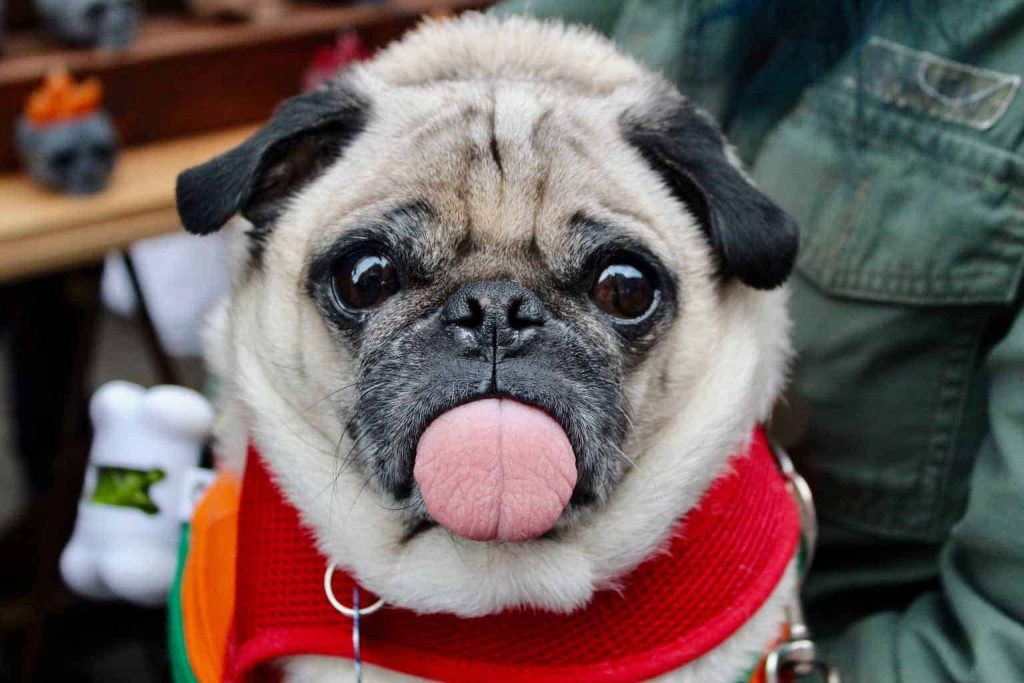Dogs do get scared at times. However, how your dog responds to a scary stimulus can, to a great extent, determine its quality of life. And as you will discover, the presence or lack of confidence in your dog can affect your life as well.
Ears pulled back, head hanging low, tail between the legs, sudden shivering of the body, these are some of the responses dog show in the presence of a scary stimulus. Socialization plays an important role on a dog’s behavior from when they are a pup to when they become adults.
Surprisingly a dogs diet also needs to be looked at here. If your dog is lacking the proper nutrition, they may also show signs in lack of confidence.
Bullyade can help your dog get all the minerals and vitamins they need daily. A healthy dog is a strong dog and they can have a much better chance at confidence this way.
Things that scare dogs
Anything could be a source of fear to your dog. It could be the sound of your washing machine when it rumbles or hooting cars in the streets. You could be taking a loving evening stroll and your dog comes to a sudden halt when he spots the grim looking manhole ahead. Interestingly, your pooch could also be afraid of your pet cat that constantly bullies him whenever he is in sight. Moreover, we also know of dogs that are scared stiff of humans; it could be the mail guy or your ever solemn neighbor with the long beard.
Poorly socialized dogs have a high tendency of developing a timid personality. For example,shelter dogs spent most of their days in confinement therefore never get to see the outside world. Some dogs are brought up in abusive homes and grow up with low self-esteem that is hard to shake.
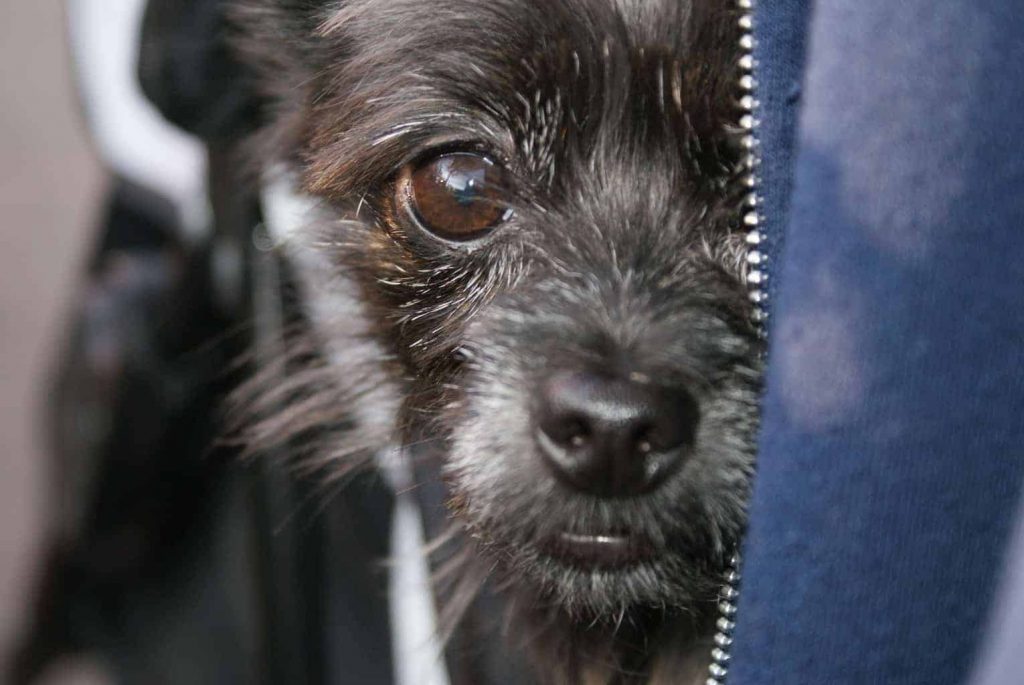
Whichever the case,it is still possible to build confidence in your dog using these easy-to-follow tips.
Tips to Build Confidence in Your Dog
The following tips and tricks are based on facts surrounding dog behavior. When a dog is in the presence of a scary-stimulus all its attention will be glued in that direction. The nearer your pooch gets to this stimulus the more scared and irrational they can get.
The trick lies in getting your dog’s attention away from the scary situation and focusing its eyes solely on you. Once you are able to master this then you can start to build confidence in your dog.
Targeting Technique
Here you cue your dog to immediately sniff or bonk a part of your body to earn a reward. Find a safe place for your pooch to train him this trick. Start by holding out your hand to him so he can sniff it. When he does, reward him with a treat.
The second time,hold out your hand again and when he sniffs use a cue phrase like ‘Good boy!’and toss a treat his way. He is now beginning to like this game because he doesn’t have to break a sweat to get a reward. Now switch things up by getting him to sniff or bonk your hand twice. Only reward him on the second sniff/bonk.
Let your pooch sniff your hand twice, thrice, four times, back to two times, and then five times. Doing this helps him not get bored (I sniffed your hand already!)quickly and get into the fun of the game. When you are confident he has learned, try the trick in a busy place.
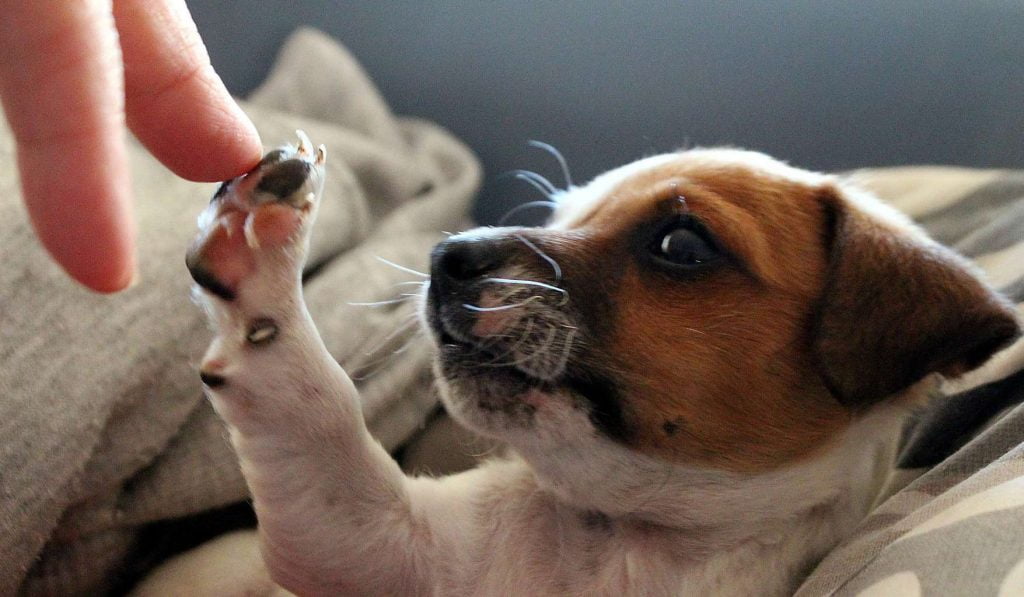
If your pooch is scared of humans, you can try the targeting technique the next time you are on a pedestrian walkway. When someone approaches (yikes! Time to hide!) call your pup and hold out your hand to him (Oh wow, its play time). When he immediately sniffs the hand, toss a treat his way. Now try the trick again to get two or three sniffs out of him. By this time the human has already passed the two of you and well on their way.
You have successfully trained your pup to focus his attention on you and ignore the scary stimulus. Secondly, your pup now realizes that every time a scary situation comes up, it is the perfect time to play bonk and earn his treat.
Fetch and Retrieve Technique
As one of the techniques to build confidence in your dog, Fetch and Retrieve pulls the dog out of the scary situation and keep at bay until the threat has cleared. You will need doggy treats or a pet toy like a Frisbee or squeaky doll. Just as the technique’s name suggests, toss the treat or toy a distance and beckon on Bingo to fetch it. If it’s a treat he will gobble it and comeback tail wagging. If it’s a toy, he will bring it back to you so you can toss it again.
If your pup already knows this game, then practice it out in a public place like a dog park. When the scary stimulus (human or another dog on a leash) is approaching beckon on Bingo to ‘fetch’ and toss a treat/toy far away. As he dashes to get the reward/toy, he is moving away from the scary stimulus, therefore, his mind will have shifted focus. By the time he comes back, you have safely gone past the scary stimulus.
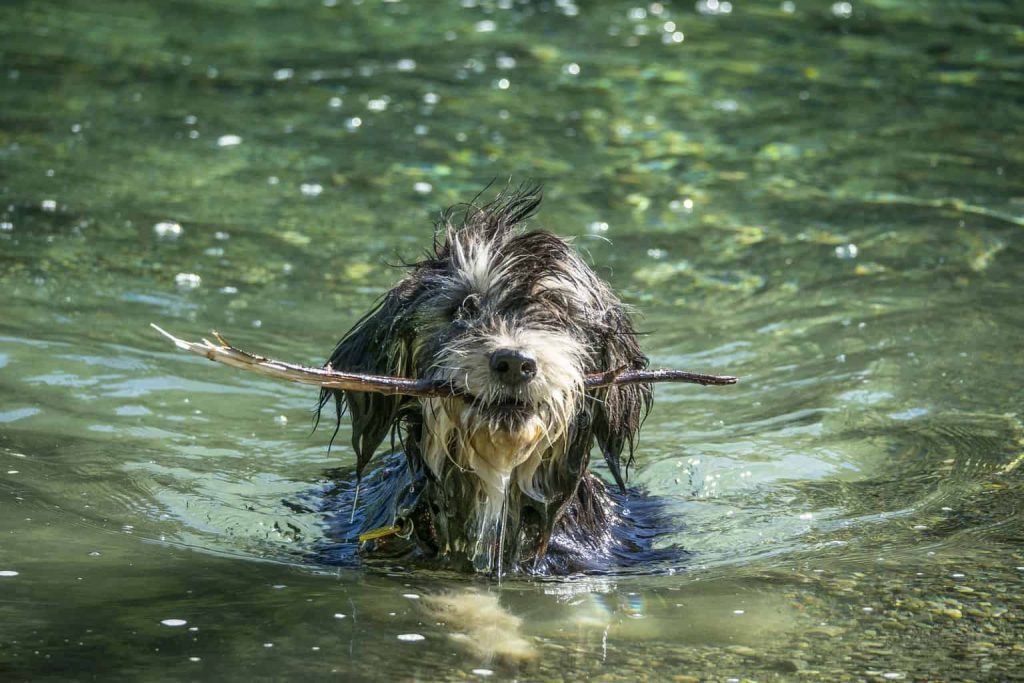
You may have to do this several times until your both clear of the scary situation. If other dog owners are approaching, you may want to initiate the trick earlier before the other dogs get the drift (because maybe they play fetch and retrieve with their master too).
Each time your pup comes back from retrieving a toy or treat, he will be focused on you because it is play time with his favorite human. You have also grabbed his attention in advance before he gets a chance to slip into scared mode.
‘Get Behind’ Technique
While some dogs can easily shift their focus from a scary-stimulus to you, other dogs just won’t budge. The fear gropes the pup immediately stopping them dead on their track.The “Get Behind’ can help build confidence in your dog because there is the advantage of the dog trusting its owner completely.
The trick is basically teaching your dog to get behind you whenever he encounters a person or an animal. Getting behind you blocks the dog’s view from the scary-stimulus and he immediately relaxes. It is definitely a trick worth teaching a timid pup.
Let your dog sit in front of you and dangle a treat on his face. Once he is interested, guide the hand towards your back as you say out loud ‘Get Behind’. When your dog successfully follows your hand to the back, release the treat and let him have it. Do this several times until your dog understand that your hand moving back means there is something tasty to look forward to behind you.
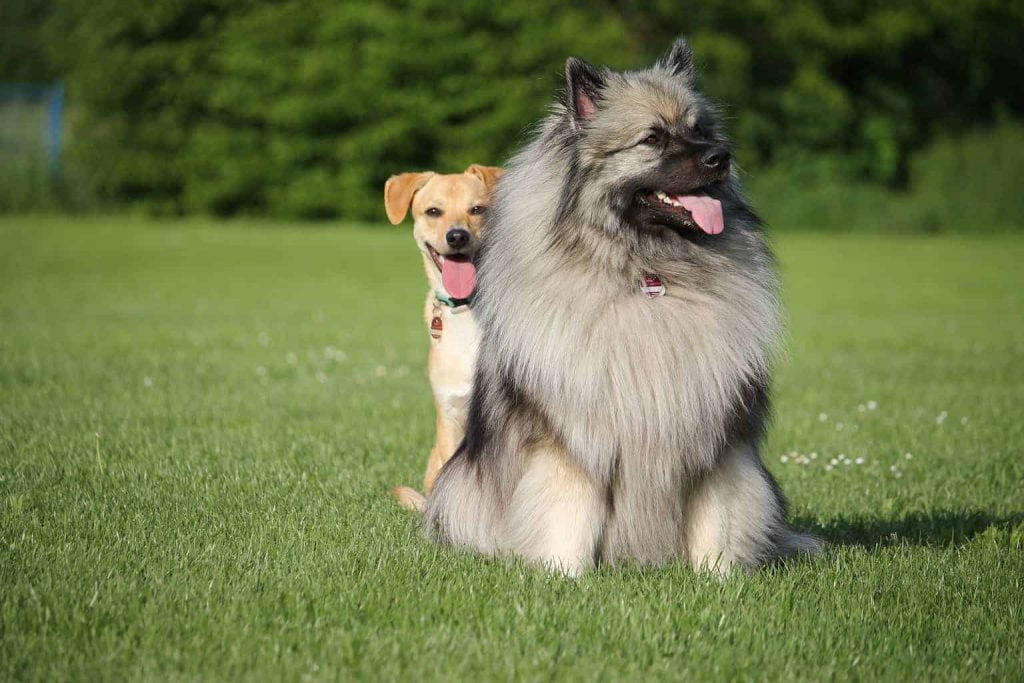
Now try luring him with a call ‘Get Behind’ and no hand gesture. He may start moving then stop midway because he does not see a hand directing him as before. Just continue the call ‘Get Behind’ until he successfully gets behind you. It helps if you hold your hands behind you where he cannot see them.
The next time you encounter a person or another dog Bingo is scared of, shout the command ‘Get behind’ and your pooch will bolt into action. As he obeys the command and eagerly awaits the reward in your hand, you have successfully navigated him away from the threat. This technique is great when you encounter a stray dog as you place a wall between your pup and the stray.
Treat and Retreat Technique
You may have used this method without the knowledge that it is actually approved by professional dog trainers and behavioral scientists. The treat and retreat technique is basically luring your dog with treats towards the object of his fear. It can be hard to get it right the first time but with a little patience, your dog will finally come around.
If there is a family member or a friend your dog is afraid of, let them be the ones to feed the treats. The person stands at a safe distance from the dog so as to not spook him. They toss the first doggy treat which Bingo gladly gobbles up. A second treat is tossed but this time to land nearer than the first one. This prompts Bingo to move forward and help himself on the second treat. The process continues tossing the treats nearer and nearer.
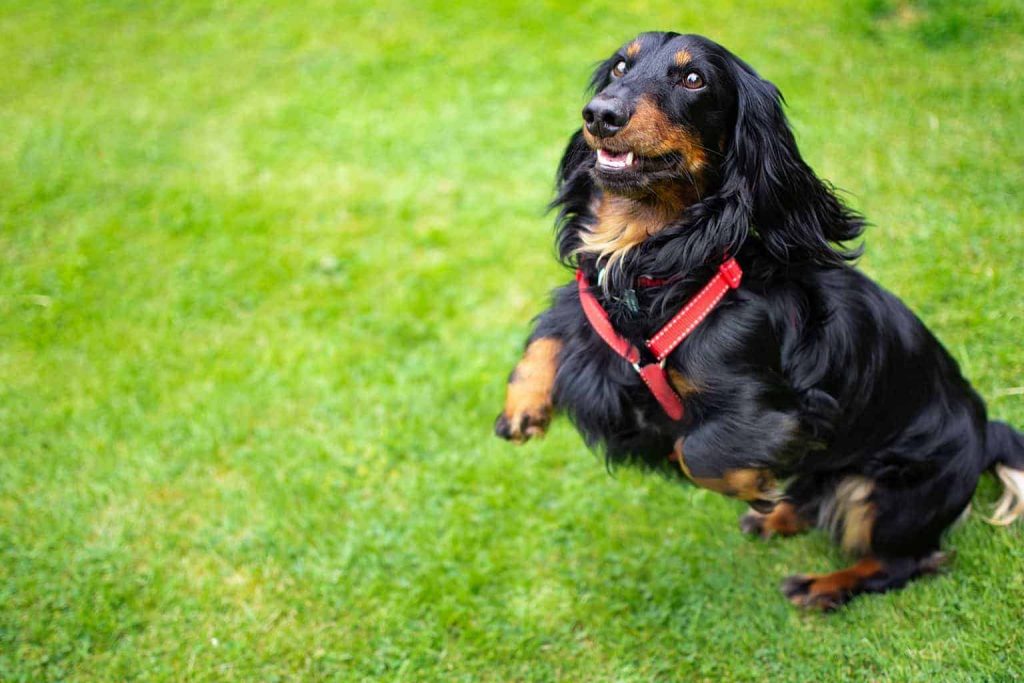
Doing it slowly gives the dog time to adjust his emotions toward the person. If he stops going after the treats when they are so near the person, then call it a day and reward him for doing a good job. The process should continue the next day until Bingo gets the last treat at the feet of the person. At this point, your dog has finally realized that the person he feared is actually nice because he keeps lavishing him with treats.
The same technique can be used for dogs that are afraid of flights of stairs, going in or out of a room or house, as well as getting into a car.
Tug of War Technique
Ever held a tattered piece of cloth at your dog and made him wrestle it out of your hand?It was mad fun for him and you can use this same play method to overcome his fearful persona. This method is similar to the targeting technique only that this time your body is replaced by the piece of cloth or a chewable toy in your hand.
As you are out strolling and come across something your pooch fears, bring out the cloth and dangle it above his eyes. Immediately his attention is captured because he knows its tug of war time. He will be welcome to wrestle the cloth out your hand and win like he always o (Wink! Wink!). At the same time, the object of his fear is way past him or no longer in sight.
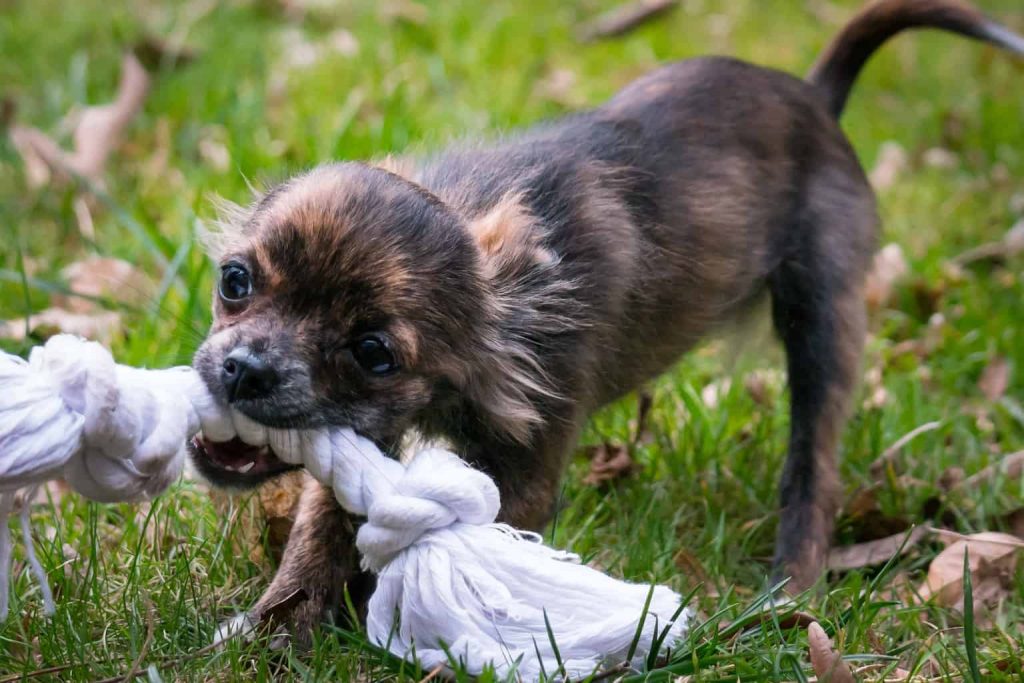
The Escape Technique
This is another technique used on dogs who cannot wiggle out of their fear. Sometimes it is hard to build confidence in your dog if the scare-causing stimulus is too intense for your dog to handle. In such moments, you will need a plan B say for example when you encounter strays in an alley or the dog park. The escape technique teaches one trick to your dog; turn and run!
For Bingo to respond the same way, you have to teach the technique at home as well. However,he must not think you are reacting out of fear but just another fun game you are teaching him. Walk with your dog a short distance before turning around and shouting ‘Escape’ or ‘Runaway’ and let him happily run after you wherever you lead him.
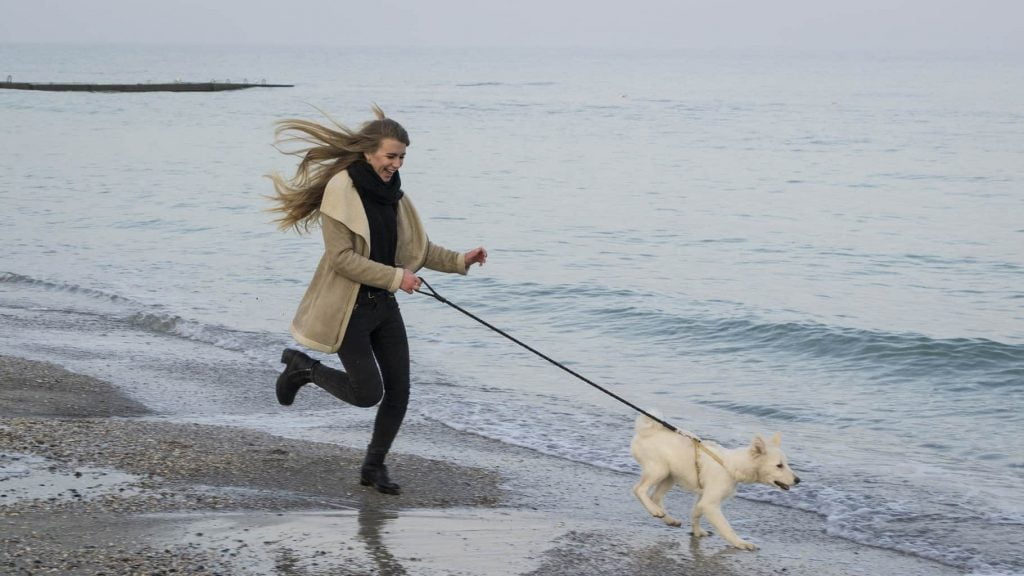
In a situation you encounter an animal or crowds of people, signal to Bingo to ‘Escape’ with you and he will gladly oblige. Run with him until you are a safe distance from the fear-causing stimulus. It could even mean crossing the street to walk on the other side away from the things that scare your pup.
Final remarks
As you build confidence in your dog with the above tricks, it is important that you remain patient through out the training sessions. Your pup may take a few days, weeks, or even months to finally learn these new tricks. How quickly he learns depends on his personality and how he has been raised.
With time, your pup will get the hang of these tricks and always look forward to them. Remember,these techniques are taught in the form of play so that it is fun for your pup.Gradually, he will learn to remove his gaze from the fear-causing stimulus and fix his focus on you. These techniques also help establish a stronger bond of trust between you and your dog.
If none of these methods to build confidence in your dog work despite your efforts, do not give up yet. Try and incorporate a behavioral specialist or dog trainer to help teach your dog. These professionals have spent countless hours with dogs and know how to respond to each canine personality they meet. It will cost you some money but you want Bingo to get better at expressing himself in public right?
Conclusion
You should never feel embarrassed because you live with a fearful dog. No matter your dog’s temperament or his history, it is possible to build confidence in your dog and spend more quality time together. You only need to be patient with your pooch and seek professional help where necessary.



